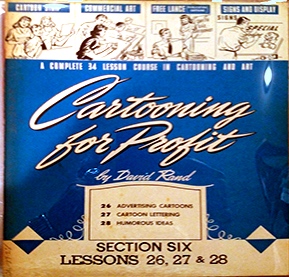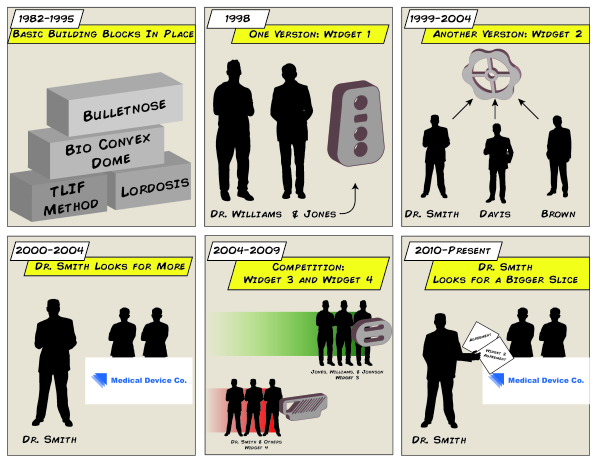By Dr. Ken Broda Bahm:
The common challenge in jury trial, and often in arbitration and bench trial as well, is to get your fact finders to follow, to understand, and to care. In pursuit of these goals, litigators will employ many tactics to continually gain and regain attention. One of those strategies is the use of graphics. Even when they are not strictly needed, photos, charts, timelines, and diagrams are common tools. What is less common, but perhaps should be used more often? Cartoons. That’s right, a cartoon-strip style where one or more cells are used to tell a story or convey a process, can often be an effective way to convey complex material in the courtroom. Recent research even suggests that it may be more persuasive than the alternatives.
A release in ScienceDaily drew me to the recent article from the Journal of Visual Literacy (Rodriguez & Lin, 2017). In the study, 2000 Iowa residents responded to one of two versions of a brochure on the merits of wind power. The versions were identical except that one included a cartoon and the other included a photograph. It turned out that persuasion on the merits of wind energy was more successful when it used the cartoon rather than a photograph. Those who saw the cartoon version found it more informative, interesting, and cognitively engaging. They also displayed stronger intentions to support wind energy, including a greater willingness to vote for pro-wind candidates, to pay more for wind energy, and to learn more about the issues. Oddly, respondents reported that the photo was more “credible,” but that did not prevent the cartoon from being ultimately more effective in changing reported behavior.
Why Might Cartoons Work Better
Reason #1: It Cuts Through the Clutter.
Lead author Lulu Rodriguez, an agricultural communications professor from the University of Illinois, writes, “A cartoon grabs people’s attention long enough to deliver the message. That’s what you need in today’s message-heavy atmosphere. Why not use a tool that has proven ability to cut through the others and inform people in a way that actually works?” The article reports on prior research focusing on educational settings showing that the cartoon format leads to greater attention, particularly when conveying complex topics like science. By adding a visual or an intriguing narrative, the cartoon-style image provides a welcome break from the alternatives that are likely to be more complicated and text-heavy.
Reason #2: It Is More Involving and Leads to Greater Processing Time.
Particularly when it involves several cells in a series, the comic strip, this style of demonstrative exhibit requires a greater degree of mental participation. Your viewers don’t just look and react, they have to follow the flow of the story. Professor Rodriguez adds, “You have to spend more time with a cartoon to figure out the meaning of the illustrations and the situation,” “People look at cartoons longer, so they’re more cognitively engaged with the cartoon.”
Is the Potential for Lower Credibility a Deal-Breaker?
Even as it adds effectiveness, the cartoon is considered less credible than a photograph to the research participants. Since credibility is an advocate’s stock in trade, does that mean that this lower credibility is a deal breaker?
My answer: Not if it works. There is a difference between credibility and effectiveness, and we see it frequently in mock trial research: Participants will say that they didn’t like a particular example or say that a certain metaphor wasn’t credible…then they end up using it in order to reach the right decision. It may be that people are assigning less attributed “credibility” to the cartoon rather than the photograph just because it seems less professional in this context. As Rodriguez explains, “cartoons may still be viewed as appropriate for entertainment or light-hearted content, but not for serious-minded topics.”
But that hurdle may be easily overcome if it turns out that the cartoon approach works. As Rodriguez continues, “I have a colleague who actually did this to explain how they got the vitamin A into golden rice using a cartoonish infographic. Not very scientific — but people get it. It’s a lot easier to explain complex scientific concepts that way.”
Example: Tell a Story in a Sequence of Pictures
The following example is based on a real case, with the names, images, and labels all changed. In short, it involved a medical device inventor seeking financial credit for devices that preceded his invention or went beyond his invention. The explanation was abstract, and the specific timeline very detailed. So we felt that jurors would understand the story in the broadest possible light through the comic-strip arrangement.
In this case, we combined the two factors tested in the study, using the actual photos of the devices, but placing them in the context of the storyboard strip style of presentation.
______
Other Posts on Innovative Demonstrative Exhibits:
- Animate: Give Your Jurors Three Dimensions, or More
- Put “Images With Impact” on Your Office Bookshelf
- Use Charts (Even If the Need Seems Trivial)
______
Rodriguez, L., & Lin, X. (2016). The impact of comics on knowledge, attitude and behavioral intentions related to wind energy. Journal of Visual Literacy, 35(4), 237-252.
Photo credit: Karen Green, Flickr Creative Commons

